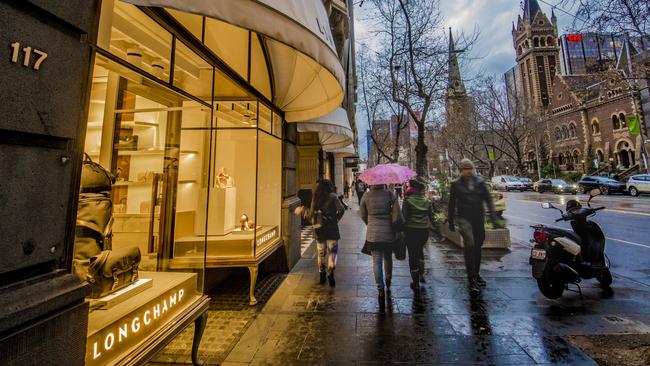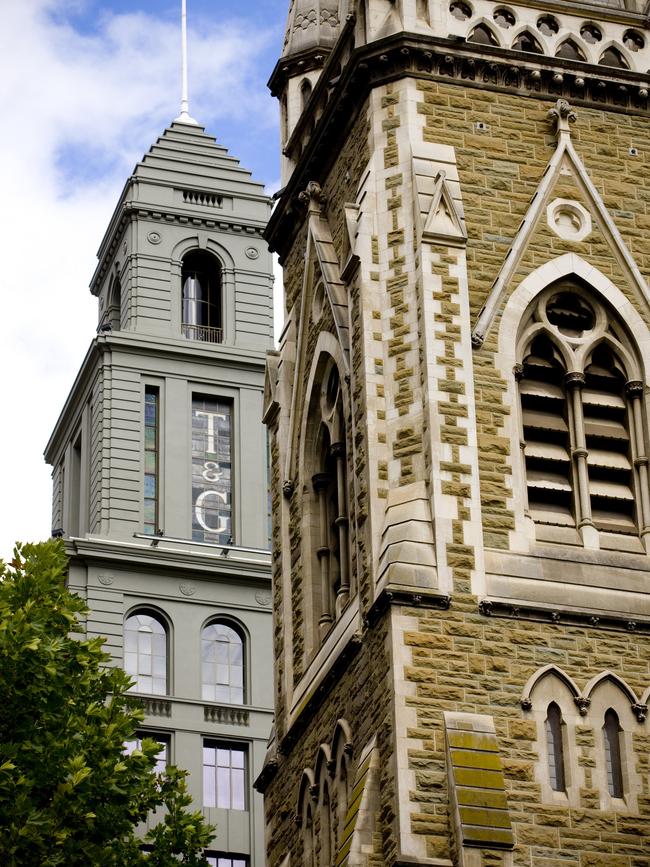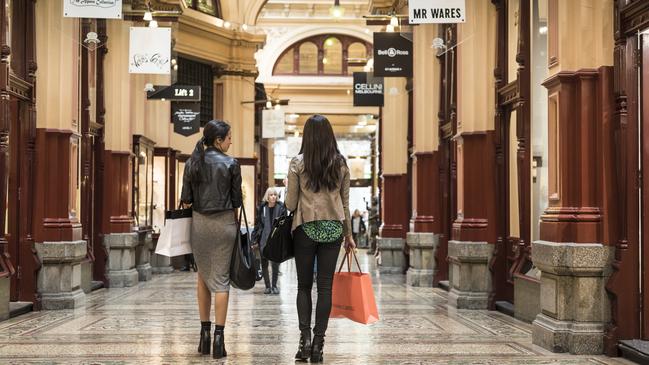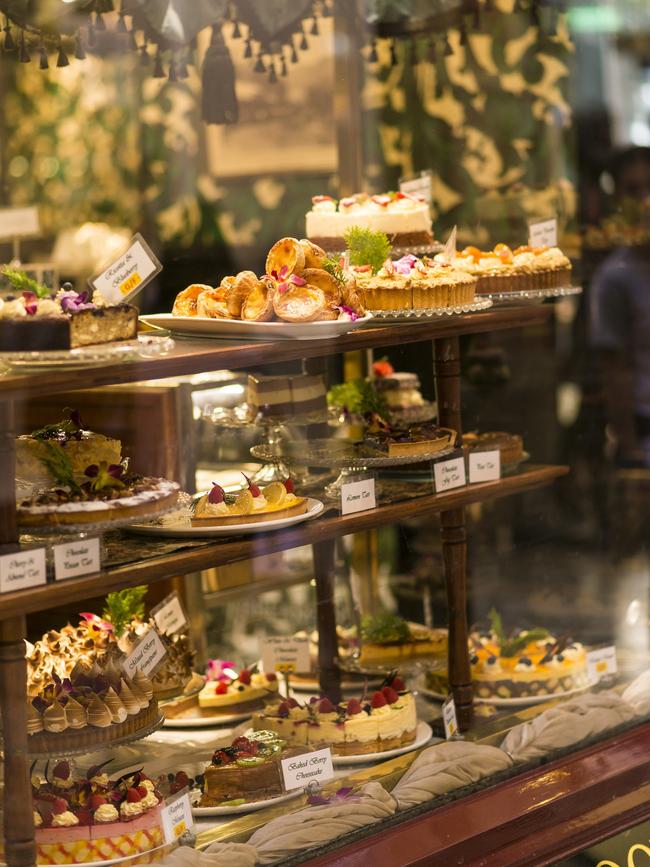City slicker
Melbourne’s Collins Street knows how to play to the crowd.

For more than 180 years, Collins Street has elevated “state of flux” to an art form. Buildings have been going up and coming down since the first blocks in the street were sold in 1837. Development has been raged against and raved about as a passing parade of gothic, Victorian, baroque, art deco and modernist architecture has shapeshifted the skyline.
Collins Street has always been Melbourne’s beating heart, its charm, grace and style a magnet for everyone from bohemians to bon vivants, from fashionistas to artists.
The eastern blocks were dubbed the Paris End when the Oriental Hotel at No 17 opened Melbourne’s first sidewalk cafe in the 1950s. Now, as a growth spurt pushes the thoroughfare from Spring Street 3km into Docklands, witness a New York state of mind with all that financial district chutzpah.
The strip is going through one of the most significant construction cycles in its history, according to commercial real estate giant, CBRE. There’s $4.25 billion worth of development under way, including nine major office, residential and mixed-use projects.
The attraction, says Zelman Ainsworth, director of retail at CBRE, is that Collins Street demands attention. “It’s one long street, with a sprinkling of heritage buildings and churches, office, retail, hotels and traffic. It’s world’s best practice,” he says.
Most of the new constructions are west of Elizabeth Street, between No 447 and No 839. Taking shape are Collins Arch, Melbourne Quarter, Collins House, the re-imagined Olderfleet towers and an $852 million development at No 600 by Zaha Hadid Architects, expected to house Australia’s first Mandarin Oriental hotel, which will join the glamorous Grand Hyatt Hotel, the Sofitel Melbourne on Collins and a W Hotel.
At the eastern end, all eyes are on 80 Collins Street, which will welcome a 255-guestroom boutique hotel, Next, and fine dining tenants Sepia, part of Chris Lucas’s portfolio, and Alejandro Saravia’s farm-to-table concept, Farmer’s Daughter.
Luxury? You’re soaking in it. High-end retailers that have looked to Collins Street for flagship stores in the past two years include Versace, Fendi, Bottega Veneta, Celine, Christian Louboutin, Balenciaga and Burberry. Gucci and Louis Vuitton have added to their Collins Street space, while investigating lodgings in the ’hood are Tom Ford, Loewe and Salvatore Ferragamo.
There’s a new lobby culture, courtesy of shared working spaces, casual meeting rooms and flexible desk rentals. Says Luke Harris, president of the Collins Street Precinct Group, “People can network, and leverage each other’s strengths to grow their own businesses. That’s changing the demographic and making the city more of an innovation hub.”
So where to take the true pulse of Collins Street? In the heritage-listed sandstone building, Chanonry (No 14), Christine Barro is settling into Christine on Collins. She relocated to the Paris End this year, above Sotheby’s, after 18 years in a Flinders Lane basement. On the racks are her evergreen labels (Martin Grant, Etro and milliner Philip Treacy) along with the new, including Isaac Reina handbags, the wearable art of indigenous designers Grace Lillian Lee and Lyn-Al, and flattering dresses from Susie Cave’s label, The Vampire’s Wife.
Waiting for a new home at Kay Craddock Antiquarian Bookseller (No 156) is an 1883 illustrated edition of Samuel Coleridge’s Ancient Mariner and a 1965 copy of Norman Lindsay’s Bohemians of The Bulletin. Snap! The shop specialises in Australiana, children’s books and matters literary and military.

The T&G Building (No 161), built in 1928, unveiled a 10-storey atrium last year and a lobby that is a destination in itself, a place to lounge, chat, work or reflect. Textured split-face bricks, floors of marble and timber, and latticed space dividers made from wood and rope are its signature. Mid-afternoon, Liminal, part of the T&G lobby, is oozing Latin American salsa. The eatery opened in May and is part of a push to elevate lobby food. It combines a lounge-style cafe and private boardroom with a bodega selling cheese, produce and wine, many made by women (wine director Nicole Bilson is on hand to advise).
At Bottega Veneta (Shop 3, No 161), boutique manager Maria Ko is admiring the hinges on the Pouch, a roomy clutch in orange calfskin featuring the house’s signature intrecciato weave. It’s the first It bag from creative director Daniel Lee; price tag, $4100. This is Bottega Veneta’s new flagship store in Australia and you could run a lot of ready-to-wear ideas up the flagpole here.
The lighting installation in the St Collins Lane arcade (No 260) is a forest of emerald green glass that forms a buffer between the shops and the Novotel Melbourne above. Look for Freitag messenger bags, made from discarded truck tarpaulins, bicycle inner tubes and car seatbelts, and the Leica camera store, which incorporates a coffee bar and a gallery showing the work of London-based photographer Alan Schaller until August 1. Store manager Cornelis Visser is talking up the Leica Q2, with its 47 megapixel, full-frame sensor and a body sealed against the weather.

On Saturday, The Block Arcade (No 282) is in browse mode. A string ensemble is playing, there’s a queue outside the Hopetoun Tea Rooms, a sale of Alessi at Georg Jensen Living, and memories of childhood for sale at The Art of Dr Seuss. But the real star is the 1892 building, the mosaic floors and a grand design inspired by Milan’s Galleria Vittorio Emanuele II.
At 333 Collins Street, absorb the opulent domed foyer that was once the entrance to the Commercial Bank of Australia chambers, dating to the 1890s. It’s as beautiful as can be.

Nearby Falcon Cafe (No 367) is named for the peregrine falcons that nest on a 33rd floor ledge. They check in each November and, like a reality TV show, a webcam transmits their stay to a screen in the foyer. Falcon Cafe, too, taps into the new food-lobby culture, shaped by the Ambient Food Group, which has several lobby cafes offering a bank of creative salads and a coffee blend by Bean Cartel. Like the peregrine falcons, says general manager Nicholas Totos, “we’ve found our niche”.
It’s 2019, so there’s sponsored content. Mercedes Me (No 525) is a multi-level space upholstered in leather, limestone, polished concrete, timber and steel. The coffee roaster uses patented technology and parts from Mercedes-Benz vehicles. There’s good food and art, such as the detached car bonnet (Mercedes-AMG C43) painted by indigenous artists Charmaine Pwerle and Fred Torres. There’s memorabilia: Lewis Hamilton’s helmet. And yes, a car, a shiny black special edition, emission-free, X Class ute. A steal at around $53,000. Order a spiced negroni while you think about it.
Check out Sky Park (No 691), a landscaped, alfresco work in progress in the Melbourne Quarter, accessed by a sculptural spiral staircase or a glass lift from which to observe the city’s choreography of cranes. Collins Square (No 727) has five towers with impressive lobby paintings by John Olsen, Yannima Pikarli Tommy Watson and Michael Johnson. As well, a virtual-reality perspective on New York by Antonio Sannino; a sumi-e ink work by Rikki Kasso; and a bright yellow sculpture from Dion Horstmans.
The Light House (No 888) is at the junction of Collins Street and Bourke Street in Docklands, where the tram terminates. The 15-storey residential building has a luminous “skin” in which LED lights respond to rain, clouds, wind and temperature with digital illumination. Five minutes on the hour from dusk to midnight, it forecasts the next day’s weather. For the best view, head to Buluk Park (No 894-910).
Susan Skelly was a guest of the Collins Street Precinct Group.

To join the conversation, please log in. Don't have an account? Register
Join the conversation, you are commenting as Logout